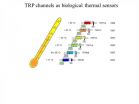(Press-News.org) Almost one in every 150 babies born in the UK is stillborn or dies soon after birth. A research team led from the University of Leicester has identified large differences across the UK in the numbers and rates of babies who die, even after taking account of known factors that influence the rate of death such as poverty, mother's age and ethnicity.
A new report by MBRRACE-UK*, a team of academics, clinicians and charity representatives (commissioned by the Healthcare Quality Improvement Partnership** as part of the Maternal, Newborn and Infant Clinical Outcome Review Programme), has looked behind these figures to try and identify how the situation might be improved. The team has collected data for the 3,286 stillbirths and 1,436 deaths in the first 4 weeks after birth (neonatal deaths) of babies born at 24 weeks of gestation or more resulting from the 781,929 births in the UK and Crown Dependencies in 2013.
This work adopts a new approach to the analysis of data concerning stillbirths and neonatal deaths for the UK in 2013 including the reporting of extended perinatal mortality rates (stillbirths + neonatal deaths= extended perinatal mortality).
Pregnancies to women living in areas with the highest levels of poverty in the UK are over 50% more likely to end in stillbirth or neonatal death. Babies of Black or Black British and Asian or Asian British ethnicity had the highest risk death with rates of 9.8 and 8.8 per 1000 total births respectively. Key findings from the report show significant variation across the UK with the extended perinatal mortality rate ranging from 5.4 to 7.1 per 1000 total births for organisations responsible for commissioning care and similarly for organisations responsible for organising the delivery of care, even after allowing for factors such as poverty, mother's age and ethnicity.
Professor Elizabeth Draper, Professor of Perinatal and Paediatric Epidemiology at the University of Leicester said: "This report confirms that the UK performs poorly compared to other European countries of similar economic status particularly Sweden and Norway. We recommend that NHS organisations across the UK and the relevant Royal Colleges establish national aspirational targets for stillbirth, neonatal deaths and extended perinatal deaths. This will enable all services to be assessed against this benchmark in the future in order to work towards achieving similar rates to those of the current best performing countries in Europe."
In identifying what actions should be taken, Professor David Field, Professor of Neonatal Medicine at the University of Leicester, stated: "Those parts of the UK shown to have the highest number of baby deaths will need to carry out thorough reviews to try and identify factors that may account for their high rates particularly those that may be amenable to intervention in the short term."
Dr Brad Manktelow, Senior Research Fellow at the University of Leicester, who led the statistical analysis said: "We have used innovative statistical methods which allow us to better take into account the demographics of the different populations and to identify organisations with high mortality rates which cannot be explained just by chance alone."
INFORMATION:
NOTES TO EDITORS
To read the full report, MBRRACE-UK Perinatal Mortality Surveillance Report 2013 and to read more about the work of MBRRACE-UK see http://www.npeu.ox.ac.uk/MBRRACE-UK
*The Maternal, Newborn and Infant Clinical Outcome Review Programme is run by MBRRACE-UK, a collaboration led from the National Perinatal Epidemiology Unit in Oxford with members from the University of Leicester, who lead the perinatal aspects of the work, including this enquiry, and the universities of Liverpool, Birmingham and University College London, as well a general practitioner, and Sands, the stillbirth and neonatal death charity.
**The Healthcare Quality Improvement Partnership (HQIP) is led by a consortium of the Academy of Medical Royal Colleges, the Royal College of Nursing and National Voices. HQIP's aim is to promote quality improvement, and it hosts the contract to manage and develop the Clinical Outcome Review Programmes, one of which is the Maternal, Newborn and Infant Clinical Outcome Review Programme, funded by NHS England, Scotland, Wales, Northern Ireland, Jersey, Guernsey and the Isle of Man. The programmes, which encompass confidential enquiries, are designed to help assess the quality of healthcare, and stimulate improvement in safety and effectiveness by systematically enabling clinicians, managers and policy makers to learn from adverse events and other relevant data. More details can be found at: http://www.hqip.org.uk/clinical-outcome-review-programmes-2/
For media enquiries contact: Professor Elizabeth Draper email: msn@le.ac.uk; 0116 2523200, Professor David Field email: df63@le.ac.uk; tel: 0116 2525437 or Dr Bradley Manktelow email: bm18@le.ac.uk; tel: 0116 2525496.
Brood parasites are reproductive cheats that evolve ways of duping other birds into raising their young. Examples such as mimicry of host eggs, chicks and fledglings by brood parasitic eggs, chicks and fledglings are amongst the most iconic examples of animal deception in nature.
New research shows that adult brood parasitic female cuckoo finches have evolved plumage colours and patterns to mimic a harmless and abundant species, such as southern red bishops, to deceive possible host birds and reduce the risk of being attacked when approaching host nests to lay their eggs. ...
A young woman has become the first in the world to give birth to a healthy child after doctors restored her fertility by transplanting ovarian tissue that had been removed and frozen while she was a child.
A report of the case is published today in Human Reproduction [1], one of the world's leading reproductive medicine journals. While there have been reports of successful pregnancies after ovarian transplantation using tissue that had been removed from patients when they were adults, there have been none using tissue taken from girls before puberty and the ability of ...
Scientists at the University of Liverpool have shown that the most complete giant sauropod dinosaur, Dreadnoughtus, discovered by palaeontologists in South America in 2014, was not as large as previously thought.
Found in Patagonia, the huge fossil had almost all of the major bones intact, allowing scientists to confidently estimate its overall size - measuring in at 26 metres long.
Preserved in rock, it is thought that the animal was close to maturity but not fully grown when it died, and may have grown to be even larger. The long-necked, plant-eating dinosaur was ...
Having a hierarchical social structure with just a few well-connected leaders enables pigeon flocks to navigate more accurately on the wing, new research shows.
Hierarchical organisation also enables flocks to cope better with navigation errors made by individual birds.
Researchers from Oxford University and the Zoological Society of London created 'virtual flocks' of homing pigeons to test how different social networks affect the navigation performance of these groups. The team's simulations looked at everything from no networks (all connections between individuals ...
A single dose of the bivalent human papillomavirus (HPV) vaccine (Cervarix®, GlaxoSmithKline group of companies) may offer a similar level of protection against HPV-16/18 infections, which cause about 70% of cervical cancers, as the current two- and three-dose schedules, according to new research combining data from two large phase 3 trials published in The Lancet Oncology.
"Our findings question the number of HPV vaccine doses truly needed to protect the majority of women against cervical cancer, and suggest that a one-dose schedule should be further evaluated. ...
NEW YORK, June 9 -- The World Health Organization released its 2015 updated essential medicines list and for the first time included the progesterone contraceptive vaginal ring (CVR), a contraceptive safe and effective for lactating women in the postpartum period.
The progesterone CVR, developed by the Population Council, is an intravaginal ring that provides women who breastfeed at least four times a day with a contraceptive option as early as four weeks after giving birth. It can be used for up to a year for improved birth spacing.
'More than 220 million women in ...
UC Davis researchers have identified the molecular interactions that allow capsaicin to activate the body's primary receptor for sensing heat and pain, paving the way for the design of more selective and effective drugs to relieve pain. Their study appeared online June 8 in the journal Nature Chemical Biology.
Capsaicin is the ingredient that makes chili peppers spicy and hot. The same pathway in the body that responds to spicy food is also activated after injury or when the immune system mounts an inflammatory response to bacteria, viruses, or in the case of autoimmune ...
Our sun is a volatile star: explosions of light, energy and solar materials regularly dot its surface. Sometimes an eruption is so large it hurls magnetized material into space, sending out clouds that can pass by Earth's own magnetic fields, where the interactions can affect electronics on satellites, GPS communications or even utility grids on the ground.
The clouds can be large or small. They can be relatively slow or as fast as 3,000 miles per second, but only one component has a strong effect on how much a CME will arrange the magnetic fields in near-Earth space. ...
Researchers at the University of Pennsylvania have found a three to five percent reduction in the probability of criminal recidivism among a sample of juveniles arrested for felony drug offenses, some of whom were processed as adults due to their age at the time of their arrests.
In a study published in the Journal of Research in Crime and Delinquency, Charles Loeffler, an assistant professor of criminology in the School of Arts & Sciences and Ben Grunwald, a doctoral candidate in the criminology department, analyzed the effect of processing juveniles as adults using ...
For engine designers in the digital age, time is money. And that time is measured in computer cycles.
Researchers at the U.S. Department of Energy's Argonne National Laboratory are partnering with Convergent Science, Inc. (CSI), to speed up a key piece of modeling and simulation software to ensure those cycles are used as effectively as possible, reducing product development time and resulting in better engines and savings for consumers. The scale of the speed gains were recently demonstrated when researchers ran the largest engine simulation to date on more than 4,000 ...




